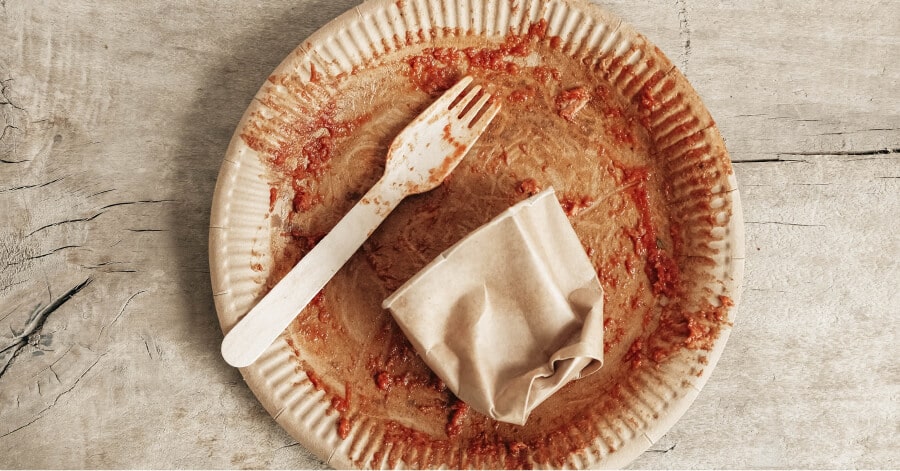Hyundai Motorstudio Senayan Park
Hyundai Motorstudio Senayan Park
Newsroom
-
Is There Any Eco-Friendly Styrofoam in the World?
- Hyundai Motorstudio Senayan Park 2022.09.23
-
Do you have a culinary business? Or, to pursue the F&B field that requires environmentally friendly Styrofoam packaging? If so, you need to find an environmentally friendly Styrofoam packaging alternative for takeaway orders and enhance a sustainable brand image .
Usually, Styrofoam becomes food packaging because it is economical and practical. In addition, it makes food products have a neat appearance.
However, is it true that environmentally friendly Styrofoam does exist? Or, eco-friendly Styrofoam doesn't actually decompose when dumped on the ground?
Let's follow the review below to help you choose the best Styrofoam packaging for your business.
Why Do We Use Styrofoam?
Initially, Styrofoam was developed in the 1940s. Styrofoam material is in demand by many people because it is economical, lightweight, and only disposable. So, after use, the styrofoam packaging can be thrown away which is very practical.
Unfortunately, Styrofoam is made of polymeric materials such as plastic. So, the material is very difficult to biodegrade .
Another problem arises when research shows that Styrofoam ingredients can cause disease.
Therefore, at this time the public must begin to realize the importance of environmentally friendly Styrofoam for food product packaging.
Eco-friendly Styrofoam Type
Check out this list of eco-friendly Styrofoam alternatives, which could one day replace conventional Styrofoam packaging on the market today.
1. Bagasse
Made from bagasse and plant fiber, bagasse can be molded into containers such as plates or bowls. When used, the bagasse container can still carry food at temperatures between -17 to 121 degrees Celsius.
In addition, this container is safe to put in the microwave. It can be said, bagasse is an environmentally friendly Styrofoam that can be an alternative to conventional Styrofoam.
Made with an environmentally friendly manufacturing process. Bagasse is produced from sugar factory waste or bagasse. Sometimes, it is also taken from the rest of the wheat industrial waste.
After that, the plant fibers are mixed with recycled cardboard or newsprint. From the results of this process, bagasse fiber is usually printed into white color. So, it can be an environmentally friendly Styrofoam choice.
2. MFPP
A substitute for conventional Styrofoam is mineral-filled polypropylene or MFPP.
MFPP products can be an environmentally friendly Styrofoam option because on average they only contain 50% less plastic than standard polypropylene. Thus, packaging factories can reduce the amount of plastic used to make containers or cups.
Another advantage of MFPP is that it can be used for hot and cold food (temperature between 2 – 115 degrees Celsius). Perfect for traveling, waterproof and oil-resistant. In fact, MFPP material is an economical choice of environmentally friendly Styrofoam.
3. EPS (Expanded Polystyrene)
Environmentally friendly Styrofoam was then made by Armstrong Brands, Inc. of New York, United States. This foam packaging is known as EPS Foam. It is sturdy, waterproof, and versatile.
EPS Foam is a material that does not contain chemicals and does not release carbon emissions when it decomposes.
4. Green Cell Foam
The next environmentally friendly Styrofoam option is Green Cell Foam as a packaging that is both functional and sustainable.
Originally from the United States, Green Cell Foam is made from corn starch grown by local farmers. The advantage of Green Cell Foam is that it is compost certified and can be dissolved in water before disposal.
This unique material certainly facilitates the process of safe disposal into the environment and protects the planet earth. However, it is not recommended to recycle Green Cell Foam packaging products. Better, this Styrofoam foam product is disposed of as compost, burned, or dissolved with water.
5. Vio®
Claimed to be the world's first eco-friendly Styrofoam cup, Vio® fulfills the dream of an F&B producer with a sustainable image. Vio® offers biodegradable polystyrene or EPS foam cup packaging.
Natural and lightweight ingredients, making the Vio® cup suitable for takeaway beverage packaging. In addition, the production process is also energy efficient, saves water, and produces little waste.
Designed to be strong and leak-proof, these Styrofoam cups do not need additional paper wrapping to reduce the amount of waste . Plus, cups from Vio® have thermal insulation properties that make them a great and practical choice when it comes to maintaining the desired beverage temperature.
How long does it take for Styrofoam to decompose in the soil?
Time flies very fast as technology advances. However, when perhaps humans had changed generations, there was still a remnant of the white, light, container left in the ground, what was that? Styrofoam.
Styrofoam made from polystyrene foam is a lucrative invention, but also a terrible one. Why so? Because, the ingredients of Styrofoam almost NEVER break down at any time! Yes, that's right, Styrofoam will remain in the soil and is very strong against microorganisms and natural changes .
Although plastic bottles take hundreds of years to decompose, Styrofoam is almost never touched by natural microorganisms, so it remains in the soil.
Of course, the problem of styrofoam waste is a long-term impact that must be addressed immediately. The threat of death of marine animals due to consuming Styrofoam waste is increasingly worrying
Even worse, the United States National Toxicology Report considers the main component of Styrofoam to be a cancer trigger.
Time to Switch to Eco-Friendly Styrofoam
In various developed countries, environmentally conscious people have intensified the plastic diet program and the styrofoam diet. This means, they will not use Styrofoam packaging at all in their lifetime.
However, for packaging manufacturers or F&B business owners, it is difficult to avoid Styrofoam. Therefore, from several lists of environmentally friendly Styrofoam above, hopefully it can be an alternative that can be considered.
As long as there is a desire to adopt a sustainable lifestyle , there will always be a way out. Let's switch to environmentally friendly Styrofoam, starting today!




